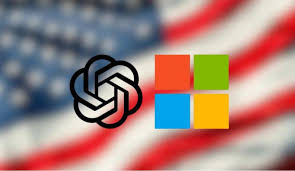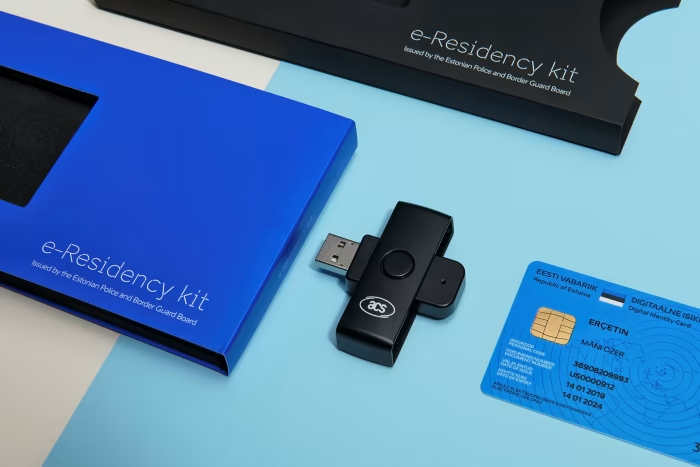Microsoft and OpenAI’s $23 Million Plan to Bring AI to K-12 Classrooms

In a groundbreaking move, Microsoft and OpenAI have teamed up with the American Federation of Teachers (AFT) to launch a $23 million initiative. This project, called the National Academy for AI Instruction, aims to train 400,000 K-12 teachers across the United States to use artificial intelligence (AI) in classrooms by 2030. The goal is to help teachers use AI tools to make lessons more engaging and personalized, not to replace them. Based in New York City, this program will offer free workshops, online courses, and hands-on training to ensure teachers can use AI safely and effectively. This article explores how this partnership is set to reshape education, its benefits, challenges, and what it means for students and teachers.
What Is the National Academy for AI Instruction?
The National Academy for AI Instruction is a new training hub designed to teach educators how to use AI tools like Microsoft’s Copilot and OpenAI’s ChatGPT in their classrooms. It’s a first-of-its-kind partnership between a major teachers’ union and tech giants, including Microsoft, OpenAI, and Anthropic, another AI company. The academy will be located in downtown Manhattan at the United Federation of Teachers (UFT) headquarters. Starting this fall, it will provide free training to AFT’s 1.8 million members, beginning with K-12 teachers. The program focuses on practical skills, like creating lesson plans, grading assignments faster, and tailoring lessons to individual student needs.
The initiative also aims to create a national model for AI in education. Teachers will learn to use AI ethically, ensuring it supports learning without taking over the classroom. For example, a teacher might use AI to generate quiz questions or suggest creative writing prompts, saving time while keeping their unique teaching style. This partnership is a response to the growing use of AI by students and the need for teachers to guide its use responsibly.
Why This Partnership Matters
This initiative is a big deal because AI is already changing how students learn. Teens are using tools like ChatGPT to help with homework, and teachers are experimenting with AI to manage heavy workloads. The academy ensures teachers aren’t left behind in this tech revolution. By training educators, the program hopes to make AI a helpful tool, not a threat to traditional teaching. It also addresses concerns about fairness, as under-resourced schools will get access to the same training as wealthier ones.
Pros and Cons of the National Academy for AI Instruction
| Pros | Cons |
|---|---|
| Free training for 400,000 teachers | Risk of over-reliance on AI tools |
| Helps teachers save time on tasks | Concerns about student data privacy |
| Personalizes learning for students | Some teachers may resist adopting AI |
| Promotes ethical AI use in classrooms | Tech companies may push their products |
Key Benefits:
- Saves Time: AI can automate tasks like grading or lesson planning, giving teachers more time to focus on students.
- Personalized Learning: AI tools can adapt lessons to suit different learning styles, helping students who struggle.
- Free Access: The program is free, making it accessible to all teachers, regardless of school funding.
Challenges:
- Privacy Concerns: AI tools might collect student data, raising questions about safety.
- Learning Curve: Some teachers may find it hard to learn new technology.
- Commercial Influence: Tech companies might use this to market their products to schools.
Personal Insight: As someone who grew up struggling with math, I remember how one-size-fits-all lessons left me frustrated. If my teacher had used AI to tailor practice problems to my level, I might have caught up faster. This initiative could make that kind of personalized help a reality for millions of students.
How Will Teachers Be Trained?
The academy will offer a mix of in-person workshops, online courses, and hands-on training sessions. These will be designed by AI experts and experienced educators to ensure the content is practical and relevant. Teachers will learn how to use AI for tasks like creating lesson plans, writing parent emails, or generating study materials. The training will also cover ethical issues, like avoiding bias in AI tools and protecting student privacy.
For example, a history teacher might use AI to create interactive timelines or quizzes tailored to their students’ reading levels. A science teacher could use AI to suggest hands-on experiments based on available classroom resources. The program will also include “innovation labs” where teachers can work with AI developers to create tools that meet real classroom needs. This feedback loop ensures that AI tools are shaped by educators, not just tech companies.
Training Highlights:
- Workshops: Hands-on sessions in New York City starting this fall.
- Online Courses: Flexible learning for teachers nationwide.
- Credentials: Teachers can earn certifications to boost their skills.
- Ongoing Support: Resources to keep up with AI advancements.
Personal Anecdote: My cousin, a middle school teacher, spends hours each week grading papers. She told me that using AI to suggest feedback on student essays could cut her workload in half. This kind of time-saving tool could let her focus more on helping kids who need extra support.
The Role of Tech Companies
Microsoft is the biggest funder, contributing $12.5 million over five years. OpenAI is pitching in $10 million, including $2 million in computing resources to help schools run AI tools. Anthropic, known for its Claude AI model, is adding $500,000 in the first year, with plans to increase support later. These companies aren’t just providing money—they’re also offering technical support to integrate AI into classrooms and improve their products based on teacher feedback.
However, some worry that tech companies might use this initiative to promote their tools, turning students into lifelong customers. For instance, Google’s Chromebooks became popular in schools through similar partnerships. To address this, the AFT has set guidelines to ensure teachers have a say in how AI is used, keeping education first.
Funding Breakdown:
| Company | Contribution |
|---|---|
| Microsoft | $12.5 million |
| OpenAI | $10 million |
| Anthropic | $500,000 (Year 1) |
Insight: The partnership feels like a double-edged sword. While the funding and tools are exciting, I can’t help but wonder if companies like Microsoft and OpenAI are also eyeing future profits. Teachers must stay in control to ensure AI serves students, not corporate interests.
What Does This Mean for Students?
For students, this initiative could make learning more engaging and tailored. AI can create personalized study plans, offer instant feedback on assignments, or help with tricky subjects. For example, a student struggling with algebra could use an AI tool to get step-by-step explanations at their own pace. This could close learning gaps, especially in schools with limited resources.
However, there are concerns. Some worry that too much AI might weaken critical thinking skills, as students could rely on tools like ChatGPT to do their work. There’s also the risk of data privacy issues if AI tools collect personal information. The academy aims to tackle these by teaching educators how to use AI responsibly and protect student data.
Student Impact:
- Pros: More personalized lessons, faster feedback, and access to advanced tools.
- Cons: Risk of over-dependence on AI and potential privacy concerns.
Anecdote: When I was in high school, I used an online math program that adjusted problems based on my answers. It felt like having a personal tutor. AI could take this to the next level, but only if teachers guide its use carefully.
Challenges and Concerns
Not everyone is excited about AI in classrooms. Some teachers worry it could reduce the human connection that makes teaching special. Others fear that AI tools might reinforce biases, like favoring certain groups in grading. There’s also pushback from educators who see this as a way for tech companies to gain influence in schools. A recent post on X by @educatorsofnyc criticized the lack of transparency in the deal, calling classrooms “test labs” for tech giants.
To address these, the AFT emphasizes that teachers will remain in charge. The training will focus on ethical AI use and include guidelines to protect student privacy. Still, the initiative will need to prove it can balance innovation with responsibility.
Key Challenges:
- Bias in AI: Tools must be checked to avoid unfair outcomes.
- Teacher Resistance: Some educators may be hesitant to adopt new tech.
- Commercial Influence: Tech companies’ motives need close scrutiny.
The Future of AI in Education
This partnership is just the start. The Trump administration has pushed for more AI in schools, and over 50 companies, including Microsoft and OpenAI, have signed a White House pledge to support AI education. As AI becomes more common, programs like this could set a standard for how schools use technology. The academy’s success will depend on whether it can empower teachers without letting tech companies take over.edweek.org
In the long run, AI could transform classrooms into dynamic, student-centered spaces. But it’s up to educators to ensure AI enhances learning, not replaces it. By giving teachers the tools and training they need, this initiative is a step toward that future.
Final Thought: I remember my favorite teacher, Mrs. Carter, who made history come alive with her storytelling. AI can’t replace that passion, but it can give teachers like her more time to inspire. If this program keeps teachers at the heart of education, it could change classrooms for the better.





